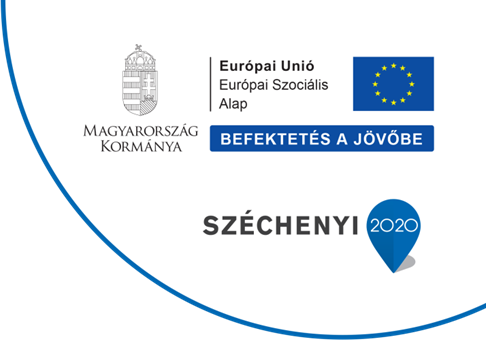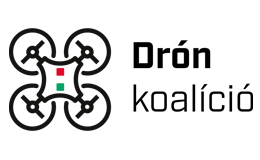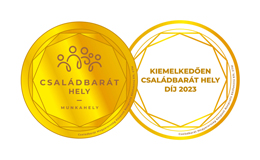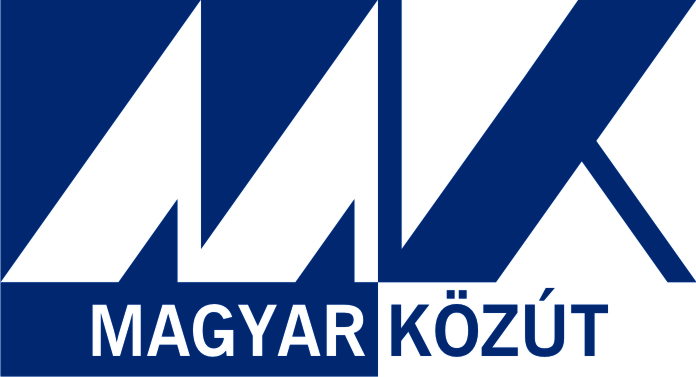- What kind of activities does Hungarian Public Roads do?
Hungarian Public Roads is responsible for the operation and maintenance of nearly 31,000 km of national roads. In addition to that, our Company is responsible for issuing route permits for oversized vehicles; the inspection of trucks at weight control stations; the training of professionals within the entire road sector; as well as the operation of the Traffic Advisory, the National Road Databank, and the Road Museum in the town of Kiskőrös.
It is important to note that we are not responsible for the operation of city roads in Budapest, motorways operated by concessionaires, and the urban road sections operated by municipalities outside of Budapest.
2. How can I determine if a certain road section is operated by Hungarian Public Roads?
The website kira.gov.hu/kira/ includes maps detailing the operators of road sections. You can register for free to access the site and get the most up-to-date information.
3. Why are there potholes on the roads?
The average age of the Hungarian primary and secondary road network is around 40 years. Added to that is the fact that roads were originally designed for lower loads and less traffic, plus cold and wet winter seasons result in increased pothole formation on the aged pavement. We continuously strive to eliminate and prevent these potholes. As a matter of fact, motorways are considerably newer on average, and consequently, pavement defects are less frequent on them.
4. Why do we perform pothole repair instead of complete pavement rehabilitation?
Hungarian Public Roads is a road operator entrusted with the repair of pavement defects in accordance with legal provisions. Large-scale repairs, or complete rehabilitation and reconstruction, are undertaken where pothole repair can no longer ensure safe traffic on a road section, dependent upon the resources required for these bigger repairs being available to us.
5. Where can I report dangerous pavement defects?
Pavement defects can be reported to our county offices, as listed on our website here.
6. What should I do in case of damage sustained to my car?
Damage can be reported to our local county offices or directly to the Hungarian Public Roads headquarters via post:
Magyar Közút Nonprofit Zrt.
Kárigénykezelő osztály
1024 Budapest, Fényes Elek u. 7-13.
or via e-mail: karigenykezeles@kozut.hu
(Please limit the size of the file/files sent via e-mail to 5 MB.)
Our staff will register the incident on the basis of the data submitted by you, assist you in completing your claim, and assess the claim on the basis of the available data. Therefore, we recommend you provide an e-mail address for further contact.
If your claim is accepted and/or if it is necessary, the administrator of your claim will arrange a consultation for you with the claims expert, therefore we also ask for your phone number.
Since Hungarian Public Roads does not have strict liability for incidents, every case shall be examined to completely clarify the circumstances surrounding it, as payment is only made for claims with clarified legal grounds, where our company has evidence-based liability for the incident. Our company has liability insurance for these cases.
Your claim will be accepted or rejected based on this assessment. If your claim is accepted, Hungarian Public Roads will arrange for compensation payments.
You may lodge an appeal under ordinary civil procedures if your application is refused.
7. Why do traffic restrictions remain in force on certain sections, when the repair work has already been completed?
In those cases where visible work has been completed, but further work still needs to be carried-out in order to restore normal traffic conditions (e.g. road pavement works have been finished, but work is still ongoing on the hard-shoulder or drainage ditches). Legal provisions shall always be respected in the course of work performance, with special emphasis on road safety aspects.
Our staff do our best to ensure that traffic restrictions are as rare and short as possible.
8. How often are road markings renewed?
The painting of road markings is strictly specified by regulations. The condition of road markings is continuously monitored by our experts, who draw up annual road marking renewal plans.
9. Where and how can I get the road operator’s permit to install information or advertising billboards; for the use of roads for non-traffic purposes or to get road access from gateways?
Hungarian Public Roads is entitled to give road operator’s permits for the placement of information or advertising billboards along the roads; the use of roads for non-traffic purposes; or road access to gateways on the operated road network. Requests shall be submitted to the local county directorate, where our staff can also inform you about the related regulations. The required request forms are available here.
10. What kind of resources are used for the rehabilitation of older roads and road safety developments?
Hungarian Public Roads has both domestic and European Union resources available to carry out rehabilitation works and road safety developments on the entire Hungarian road network.
11. How does Hungarian Public Roads generally prepare for the winter service period?
During the winter service period, Hungarian Public Roads’ primary mission is the clearing and removal of ice and snow from roads, and the repair of surface defects formed under winter conditions. Steps are taken to ensure our salt and gritting material stock is completely full, and our winter fleet is also serviced for the winter season.
12. Why shouldn’t I overtake a snowplow which is working on the road?
When it comes to snowy weather, you can often see our vehicles performing snow removal or de-icing. Please do not approach these vehicles, since salt and grit spread by them might be thrown-up and damage your vehicle. It is not recommended to overtake snow removal vehicles either, as snowy roads are less safe than freshly cleaned ones and the change of direction might pose further risk to safety while driving. If you do not want to overtake the working vehicle, please keep a safe distance behind it.
13. Why do I see winter service vehicles going along swnowy roads with raised plows?
The company’s snow removal plan specifies fixed routes for each of our vehicles. Machines fill-up with maintenance material at maintenance centers and commence gritting as soon as they reach their target locations. They travel to these target destinations with raised plows in order to be as fast as possible.
14. Is the harmful effect of road salt on the environment detectable?
In order to ensure safety and mobility during the winter months, anti-skid measures are applied on our roads. The amount of salt spread on the roads depends on weather conditions; salt spreading is not automatic and outside temperature is not the only factor we take into consideration when deciding on road salting. Our colleagues decide what kind of winter measures shall be carried-out based on variants such as air humidity, intensity, type and spatial distribution of the precipitation. We continuously monitor the condition of the natural environment surrounding the road, including the effects of road salt on soil and groundwater. Since the most frequently used anti-skid material is rock salt (which is a water soluble material), it does not accumulate significantly in those locations that are subject to salt spreading (approx. 30-40 m from the edge of the surface, to a depth of 25-40 cm). The major portion of anti-skid materials spread on roads in winter months is washed away by the spring rains. Measurement values are regularly sent to local environmental authorities.
15. Where can I report animal carcasses and who is responsible for their removal?
Animal carcasses can be reported to our local county officesPlease specify the location as accurately as possible, indicating the road number and the kilometer marker, if possible.
Each task is immediately forwarded to our licensed contractors who will perform removal of the carcasses and disinfection within 12 hours.
16. Based on what criteria do we decide to cut-down trees along the roadside?
The entire stock of trees located in the territory of the public road network is evaluated in line with the applicable legislation every two years. Trees that are potentially dangerous to road safety are cut-down based on these assessments, in a scheduled manner. In some locations felling is necessary to ensure safe traffic flow.
Did you know we also ensure the replacement of the trees we cut down? Tree and shrub planting is undertaken each year in suitable territories of the public road network, as established beforehand.
17. What do road inspection vehicles do on the road? Why are they so slow?
Our road inspector colleagues carry out road inspections on our road network as specified by the road inspection plan, and in accordance with the provisions of decree No 6/1998(III.11.) KHVM on regulating the management of national public roads and related regulations. Road inspections are aimed at recording and fixing irregularities found not only on roads, but also in their environment. Road inspectors drive slowly so as to note every irregularity and where a case requires immediate intervention, they pull to the hard-shoulder to carry-out the required tasks. They are doing an extremely important job for the precise knowledge of road conditions and the proper maintenance of roads, therefore we kindly ask for your patience towards them.
18. How can I contact the Traffic Advisory, and what kind of information can I request?
Our Traffic Advisory can be contacted at +36 1 336 2400 and www.utinform.hu, where you can get information on incidents; congestion; road repairs; construction and completion of new roads; junctions; cycling routes; bypass routes; weight and speed restrictions; weather-related obstacles; truck restrictions and ferry timetables; or any event occurring on our public roads.
19. What is the function of hard shoulders / emergency (stopping) lanes?
The part of the road pavement known as the emergency (stopping) lane is there to assist operation and rescue duties, but is also a lane for vehicles suffering technical breakdown, where they can wait for assistance without causing any major disorder to the flow of traffic.
20. What should I be aware of when I am forced to use the emergency (stopping) lane due to a technical breakdown?
In a technical breakdown situation, you should pull over as far as possible to the right edge of the emergency lane. It is important that the person dealing with the defective vehicle should not cross the border into the traffic lane, and they should stay as far as possible from it. Regardless of the duration of the stoppage, the hazard lights of the vehicle should be switched on and the vehicle breakdown triangle should be placed (~25 meters) behind the vehicle to make it visible to approaching vehicles. Nobody should stay on the motorway without a high visibility vest, and passengers should get out of the vehicle and stay at a safe spot behind the guardrail.
21. Why I am not allowed to use the emergency lane during traffic congestion due to accidents?
When accidents or congestion occurs, it is important to ensure that rescue vehicles (ambulance, firefighters, police, road operator etc.) can get to the scene of the disturbance as quickly as possible without any obstacles, so normal traffic flow can be restored as soon as possible. Trying to escape the traffic by using the emergency (stopping) lanes, turning, or driving backward to gain a few minutes is extremely risky behavior which goes against the rules of the traffic code. Emergency (stopping) lanes can be used only when the police diverts traffic to these lanes in the immediate proximity of the accident scene.
22. Where can I find information on the range of public roads which can be used by bicycle?
The road network operated by Hungarian Public Roads can be used by cyclists in accordance with the rules of the traffic code.
We also recommend you browse the website of kenyi.hu (bicycle road register) which provides information on potential cycling routes offered by primary and secondary roads assisted by a so called “Google based” map.











